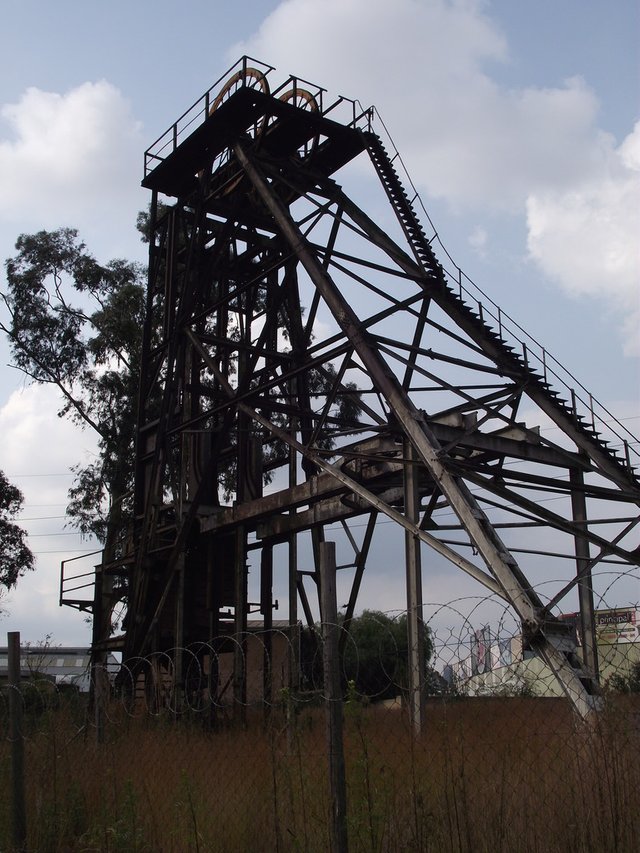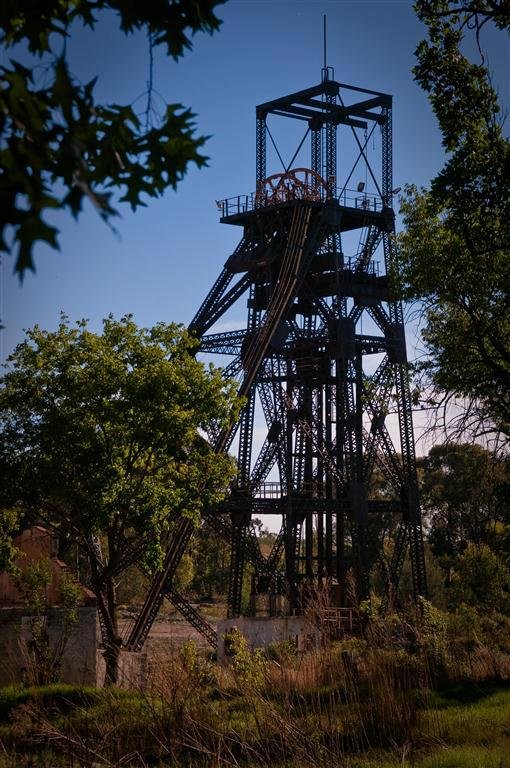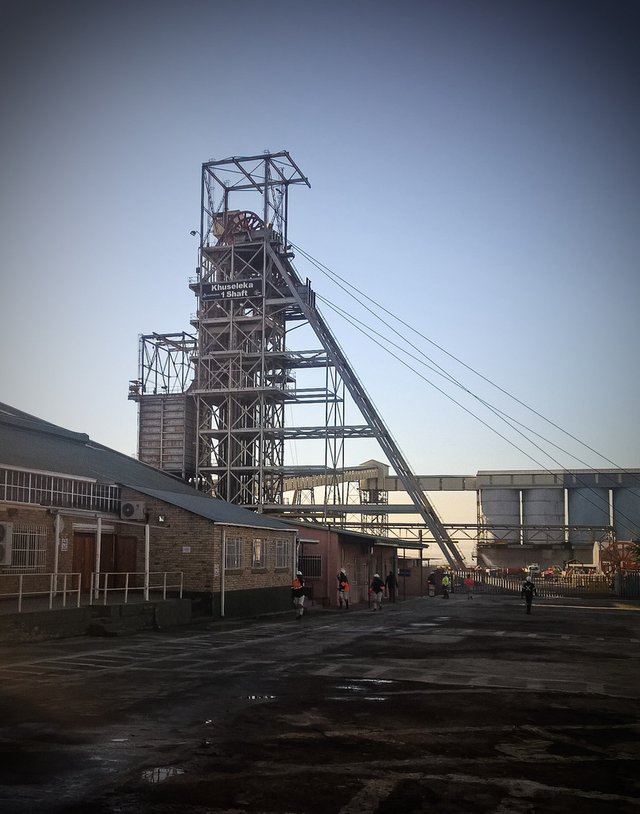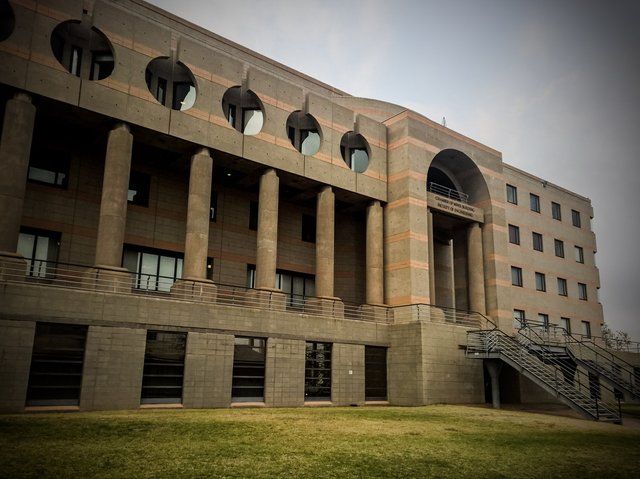Why mines close down (featuring @clint01 as author)
I was recently asked why mines close down. Is it because they have run out of ore? Well - the short answer is yes - there is no ore left. The long answer is a little more complicated - because what is considered to be "ore" is not fixed and it varies depending on how the mineral resource is managed. Ore is the portion of the mineral resource that is considered to be legally and economically extractable for a given commodity price and expected mining cost (also termed the mineral reserve).

Crown Mines 1 Shaft in Johannesburg
The management of a mine's mineral resource is governed by two fundamental factors, revenue and cost, pretty much the same as any other business. However with mining, the flow of revenue needs to be managed over the life-of-the-mine to ensure optimal extraction of the ore-body. The mineral resource is a finite resource. If it is not optimally extracted, there is a loss of value for the stakeholders.
Mining companies calculate a cut-off grade to determine what portion of the mineral resource can be mined economically. This cut-off grade (the lowest block grade included in mine plan) the takes into account the price of the commodity, the expected mine recovery factor, the cost to mine the ore as well as the fixed costs for the mine. By using the planned extraction rate, expected recovery factor and production costs, the variable to the break-even grade then becomes the in-situ grade of the material being sold. As long as the grade mined is higher than the break-even grade in a particular block being mined, the block will be mined profitably. The break-even grade then effectively becomes the cut-off grade if trying to maximise the profit is the primary aim.
However this cut-off grade differs over the life-of-mine. In the initial phase, the mine needs to recoup the initial capital as quickly as possible. Higher grade portions of the ore-body are targeted first which generate the highest returns. This will ensure the highest net present value (NPV) from the deposit. Once the initial capital is paid off, the cost-of-capital can be revised and a lower cut-off grade can be used. This cut-off grade still needs to cover the cost of developing and opening up new areas of the mine. In the final stages of a mine, even these costs can be removed and final harvesting of the areas previously left can take place.
Commodity prices are continuously changing. As they change, so the break-even grade varies. The trick is to manage the cut-off grade to take a longer term view on the commodity prices. If this is not considered, there will be a forever opening and closing various working places with grades close to the break-even grade. This results in a loss of efficiency and pushes up the mining costs. There is efficiency in size. Mines should operate close to their maximum design capacity to ensure the fixed costs are spread across the largest volume. This lowers the unit costs and allows cut-off grades to be lower. Lower cut-off grades allow a greater portion of the ore-body to be mined, allowing higher volumes. It’s a win-win situation. Sadly however, as commodity prices fall, the reaction of the mine is to reduce the volumes, resulting in higher unit costs which further increase the cut-off grades. This leads to premature mine closure.

Durban Roodepoort Deeps (Near West Rand, Johannesburg)
Optimisation is a subjective decision. Optimisation for whom? Different stakeholders in a business would wish the optimisation to consider different key values. For employees, they would like the cut-off grade to ensure the longest-life. The cut-off grade would then be very close to an overall break-even grade (rather than individual mining blocks break-even grade) and mine's profitability would not be an objective at all. Management and mine employees on a profit-share scheme would consider profitability to be the key value to maximise. Long-term risk adverse investors would ideally have the mine optimise on the internal rate of return (IRR) whilst long-term risk takers would rather the mine optimise on NPV.
Many current investors, however, buy mining shares for short term share price gain and would also consider profit to be more important than NPV (you only as good as your last quarter). These investors are also using mine shares as an alternative to buying the physical precious metal in the case of commodities like gold and platinum. There is a multiplier effect to be gained in the company shares where a small improvement in the metal price yields a far larger improvement in the company share price.

Rustenburg Platinum Mines, Khuseleka 1 Shaft.
The State is also a stakeholder and would like the mine to generate the highest income tax (and this needs highest profit considering most income taxes are determined on profits). They would also consider job security for the employees to be important as well as the larger benefits to communities by having operating businesses. So a cut-off to optimise purely on profit would probably not be in the State's interest. Countries that impose mineral resource royalies on overall mineral sales would also prefer mines to focus on greater extraction of the mineral resource rather than just on profit. Recently a paper I wrote was presented to a commission reviewing taxes in the country where I live, and was severely criticized because the cut-off grades in my models were based on optimising NPV and profit. My argument is that mines will consider the interests of the management (profit) and the shareholders/investors (profit and NPV) rather than the employees and the State. Because these are the people determining the cut-off grade strategy of the mine, they will consider their interests before other stakeholders.
So to answer the question of why mines close is really not a simple answer. Often mines shut down prematurely with economically viable ore left underground because they pursued a cut-off grade strategy focused on short-term gains and profit rather than long-term life and optimal extraction of the ore-body. States as the custodian of the mineral resources in their countries should be more involved in these types of mining decisions. The days of allowing purely capitalistic decision making by mining companies is coming to an end in the light of increasing premature mine closures and job losses.

Chamber of Mines building at the University Witwatersrand, Johannesburg.
The author is a lecturer in Mine Financial Valuation and Mineral Resource Management and is reading for a PhD considering cut-off grade optimisation.
Very interesting reading! Support also the idea, in some way, of a jump in the price of gold in the near future but from the side of the mining industry or at least is what I feel from the reading. Thanks for sharing
great article @clint01
Thanks - watch for my next article which will be about how to make money from mining shares - haha
Great article. Many gold mines have been high grading in the last few years due to the lower gold prices and higher AISC (all in sustaining cost). High grading is terrible for the long term prospects of the mine but many companies had to implement this process just to survive. As a result we will see even less supply in years to come and possibly additional mine shutdowns.
Oh yes. And coupled with reduced fresh capital for large projects - the end for many of these great mines is sooner rather than later.
This is why I like the royalty/streamers :)
My research is into the impact of the mineral resource royalty on narrow tabular precious metal deposits. Because it's treated as a cost - it can have an impact on cut-off grades and in some cases - a massive impact on the minable reserve. Seen in one case a reduction of 20% minable reserve after a 3.5% royalty cost
Bookmarked for late-night reading. I like your interesting post.
Thanks 👌
Hi @gavvet and @clint01. I accidentally clicked on a button that says reblog. It was an accident and I can't undo it.
Excellent post by the way.
No worries. I see what I did.